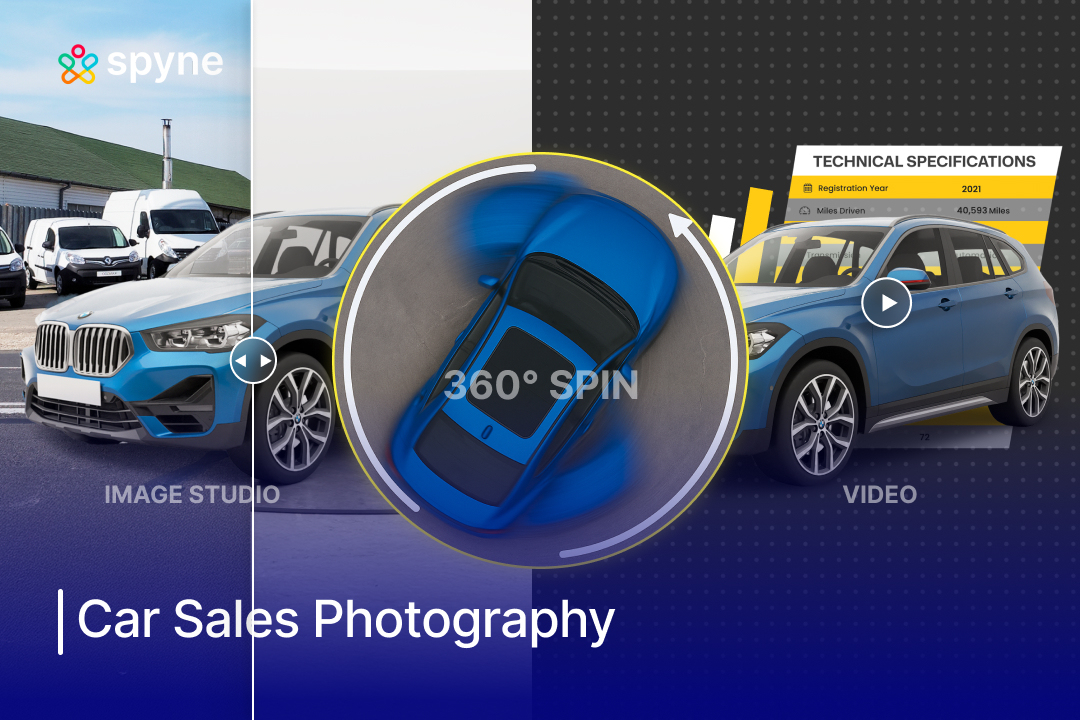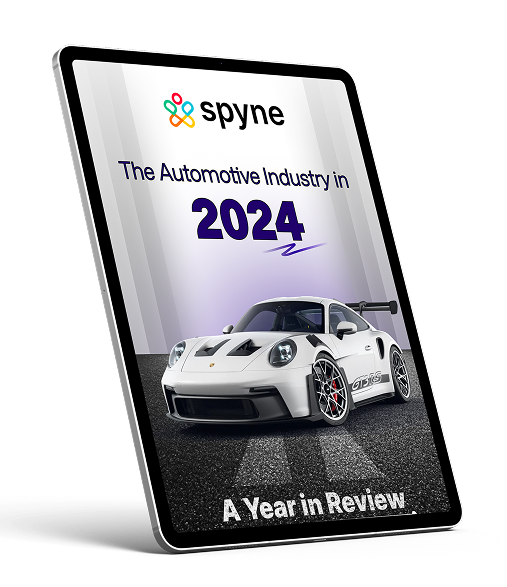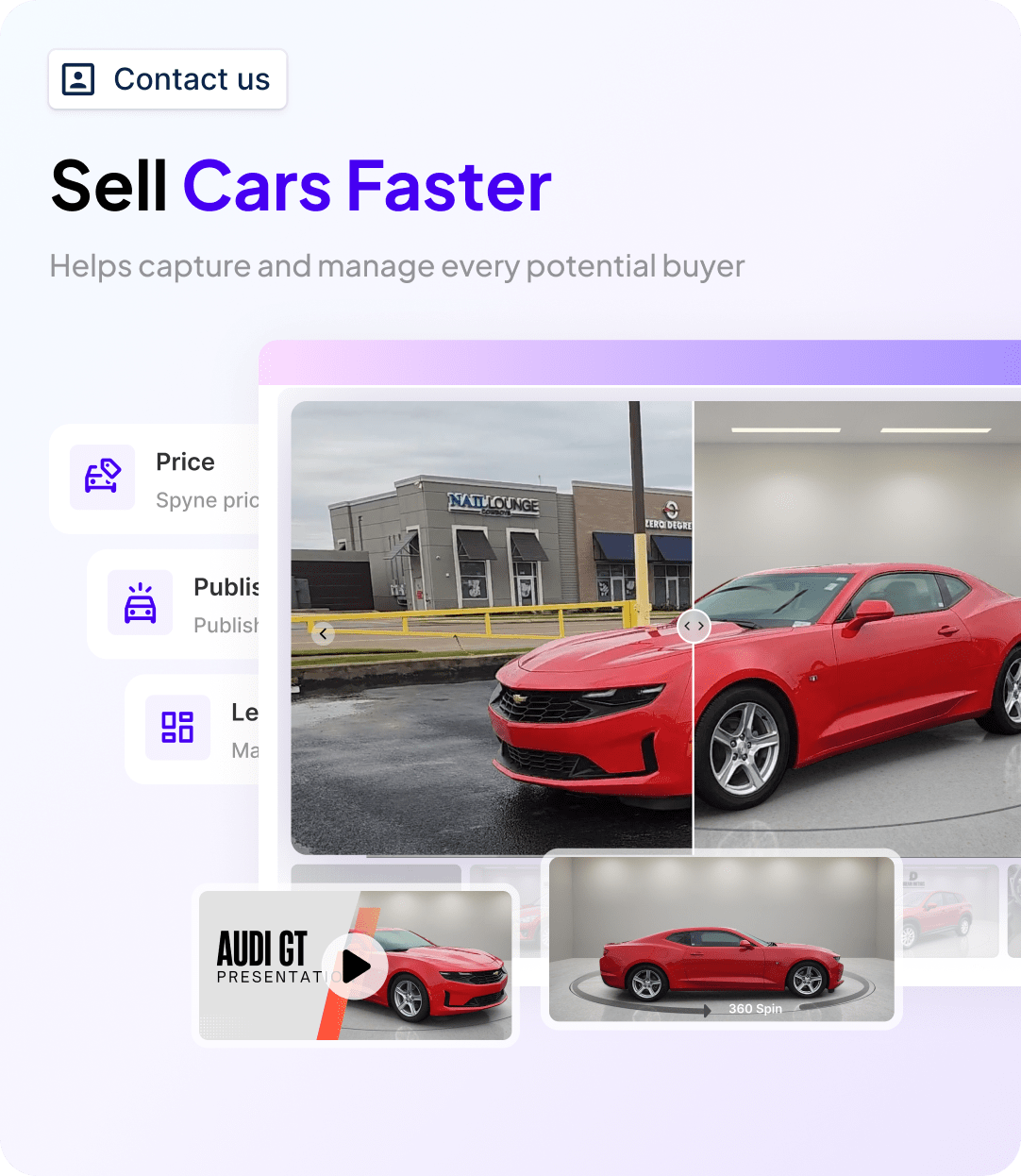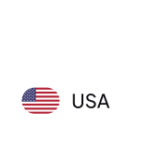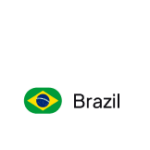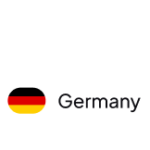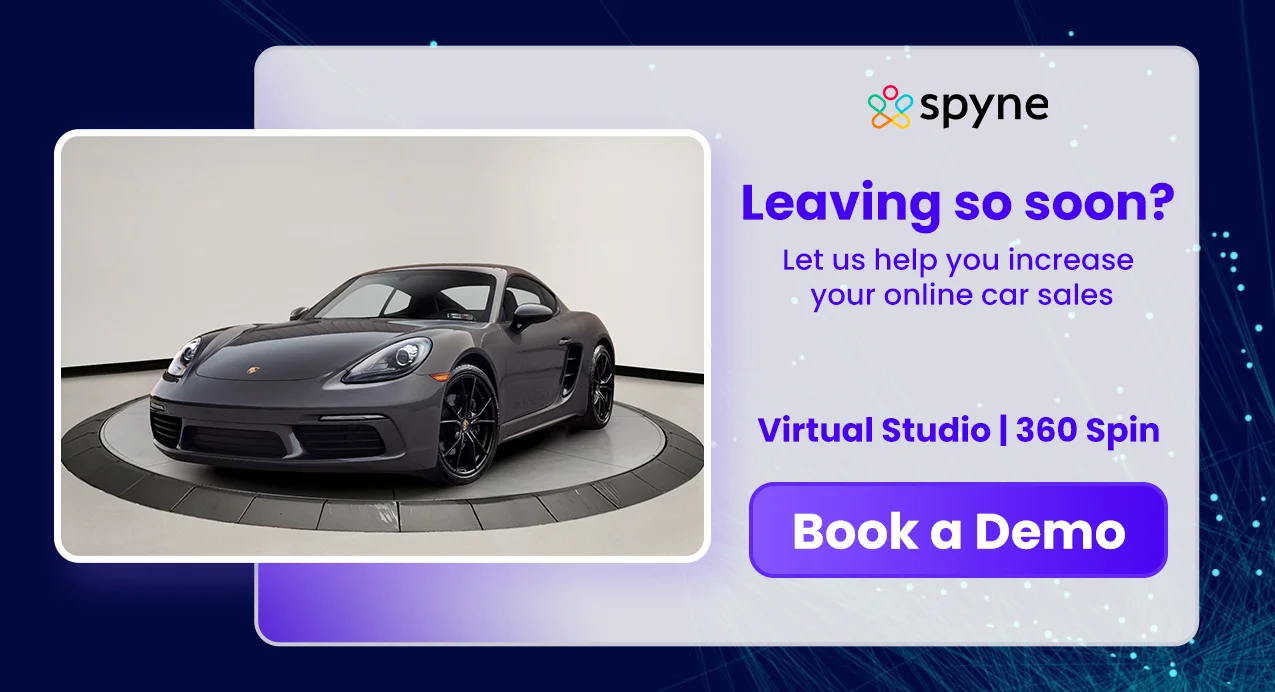Car sales photography has become one of the biggest factors shaping online car sales. Scroll through any car marketplace, and you’ll notice one thing: photos decide whether you stop or keep scrolling. Specifications do matter, but the very first click usually comes down to visuals.
That’s not just an assumption. Around 90% of car buyers begin their search online, and when they land on a listing, it takes only a few seconds for them to judge whether a car feels worth exploring further. A pixelated or poorly lit image can shatter interest before they even glance at mileage or price. With sharp, consistent photos, the very same car comes across differently; buyers see it as well-kept, reliable, and priced fairly.
For dealerships, this is a critical truth: car photos aren’t just “marketing assets.” They are often the first touchpoint with a customer, a kind of silent sales pitch that sets the tone for the entire car-buying journey.
This is where car sales photography comes in. Unlike casual snapshots, it’s a structured approach to creating images that inspire confidence, highlight details buyers care about, and ultimately move vehicles faster.
What is Car Sales Photography & How Does It Differ from Normal Photos?
Some car listings catch the eye instantly, while others barely get a glance. Often, the difference isn’t the car, but its vehicle photography. Car sales photography isn’t about fancy angles or dramatic lighting for style. It’s about showing a car in ways that grab attention during fast scrolling.
Regular photography can be striking, but buyers want to see the car genuinely. They want to understand its shape, condition, and features at a glance. Car sales photography focuses on practical angles, lighting that doesn’t hide scratches or dents, and photos that show dashboards, odometers, and tires. It’s less about looking artistic and more about evoking buyers’ emotions and helping them judge the car quickly.
When a listing shows multiple angles and details, buyers can picture the car more clearly. Without over-editing or fancy backgrounds, the car’s condition comes through naturally. Honest, consistent visuals make a difference, letting buyers scroll through the images and imagine themselves behind the wheel.
The Psychology of Car Buyers: Why Photos Matter More Than Specifications?
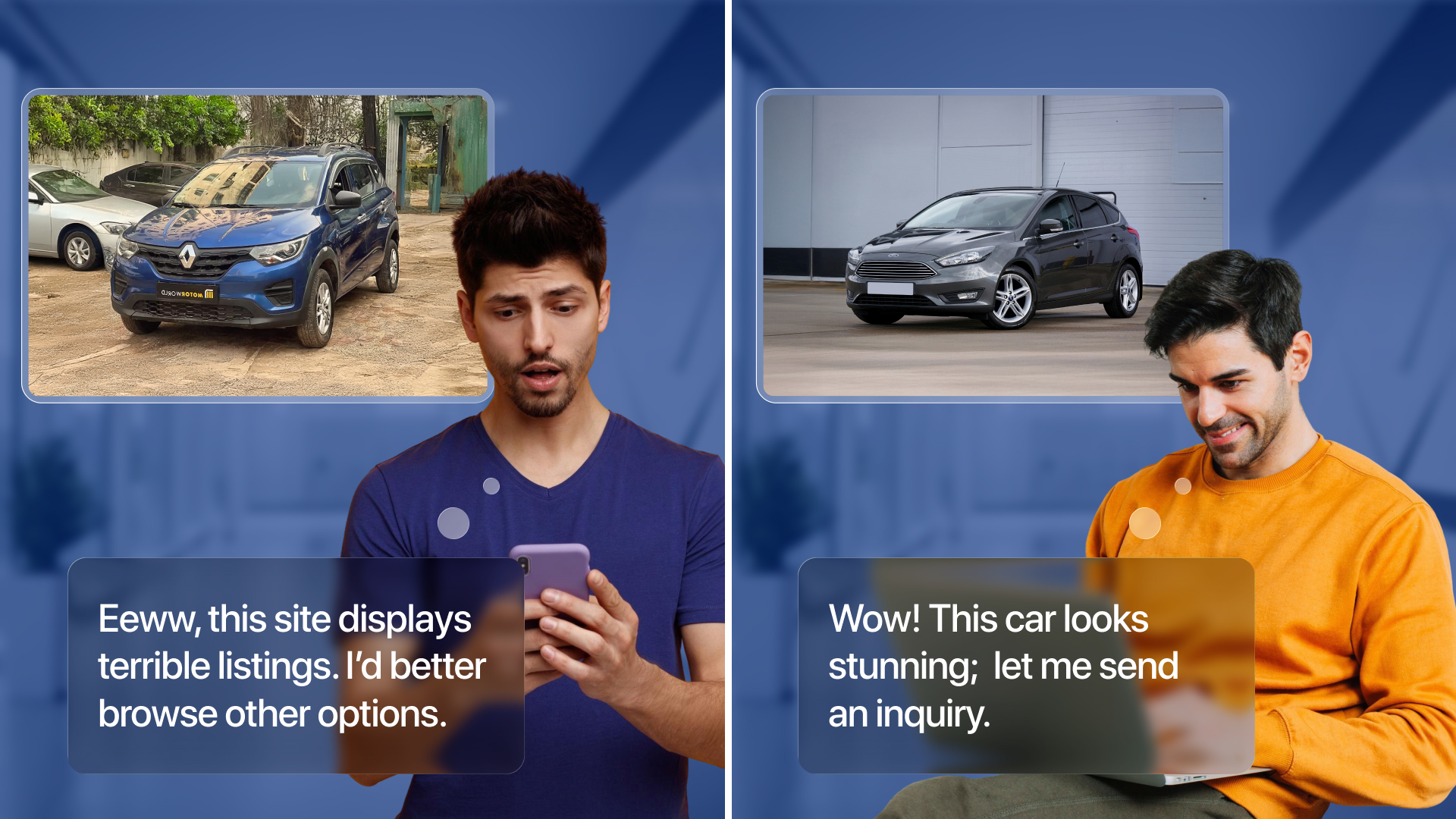
When someone scrolls through listings within a car marketplace, they make decisions within seconds. A car with dark interiors or blurry shots is often skipped. Bright, clear photos make buyers pause.
They notice small details, such as the odometer, the tires, and even minor scratches. These details give clues about the car’s condition.
Good images do more than show the car; they also showcase the dealership’s professionalism. Messy or inconsistent shots make buyers hesitate. Real-looking, well-lit photos build trust.
Even tiny angles matter for buyers. A clear dashboard or a seat in good light helps buyers imagine themselves in the car. Listings that capture these details attract more attention and inquiries.
Car sales photography, when done carefully, doesn’t scream for attention; it quietly earns it. Buyers stop, look closer, and feel confident reaching out.
What Car Buyers Expect to See in Photos?
- Exterior: Multiple angles, sometimes 360° views, to judge shape and style.
- Interior: Places that reveal comfort and wear, such as the dashboard, seats, infotainment, and steering wheel.
- Condition cues: Tires, odometer, minor scratches, or dents. These subtle details hint at the vehicle’s maintenance.
- Transparency indicators: Stickers, service records, or any other items that display transparency.
- Lifestyle shots: For premium vehicles, showing the car in a setting buyers aspire to.
Buyers notice even small details. A poorly angled shot of a rear wheel or a glare on the dashboard can turn them away. Properly captured visuals help them pause, imagine driving that car, and feel more confident about contacting the dealer. Although those photos don’t speak, they guide the buyer’s attention during the car-buying journey and build trust. A listing with careful, consistent images quietly sells itself, long before anyone from the dealership picks up the phone.
DIY vs Professional vs AI-Powered Photography
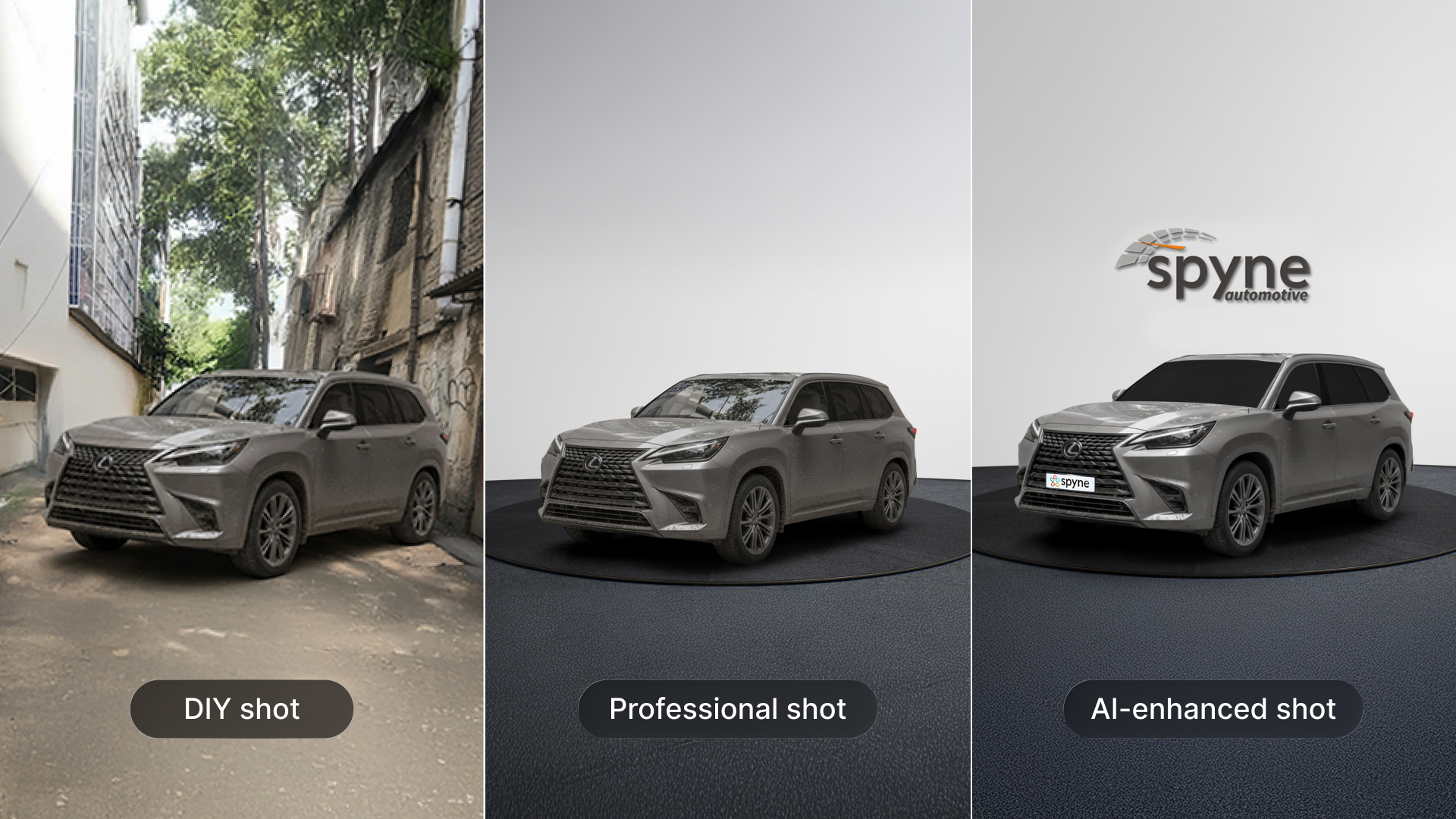
How cars are photographed changes how people react to a listing. Dealers usually pick between three approaches: snapping the photos themselves, calling in a professional, or using AI-powered photography. Despite the approach, the purpose of car sales photography doesn’t change, i.e., buyers get to see the car clearly and trust what they see.
DIY Photography
Some dealers prefer doing car photoshoots on their own. The car is parked outside in good light, but inconsistent angles, shadows, or uneven interiors can reduce buyer trust. DIY works when done carefully, but it often surfaces issues like poor lighting or rushed edits. DIY shoots can make a listing look careless and put doubt in the buyer’s mind.
Professional Photography
A professional setup uses lights, sometimes a photography turntable setup, and captures every detail, from seats to minor scratches. These images look polished yet believable. It triggers buyers to pause on these photos, zoom in, and imagine the car as theirs. However, extended photo shoot duration is a major drawback of this approach, because arranging a shoot takes planning, and while that happens, some cars sit waiting with no photos.
AI-Powered Photography
Car sales photography becomes much faster for car dealers using AI tools. Dealers upload a few basic shots, and in minutes, new images are ready. They look brighter, more even, and the backgrounds are cleaner. Shadows are reduced, and minor flaws can be softened automatically. This is especially useful when there are dozens of cars to photograph in a short time. For dealerships with high-volume listings, the speed and consistent results make AI a tool that’s hard to ignore.
Choosing What Works
No single approach works for every dealership. Dealers with a smaller lot might lean on a DIY approach, while luxury brands prefer professional shoots, and high-volume sellers often turn to AI for speed. The main focus is not on the approach, but on whether the images are clear, consistent, and authentic.
The best results usually come from mixing methods, matching the right tool to the right car. When car sales photography is on point, buyers pause, look deeper, and feel comfortable reaching out. Strong images quietly drive sales long before anyone at the dealership makes a call.
| Method | Cost | Speed | Consistency | Scalability | Best Fit |
| DIY Photography | Low
(just a phone/camera) |
Moderate
(depends on staff time) |
Low to Medium
(varies by lighting and angles) |
Limited
(works only for a few cars) |
Small dealerships with limited budgets or very few cars to list |
| Professional Photography | High
(equipment + photographer fees) |
Slow to Moderate
(requires scheduling) |
High
(professional lighting, editing, framing |
Limited
(harder to scale across large inventories) |
Dealerships focused on brand image or dealing in premium cars and luxury models |
| AI-Powered Photography | Medium
(software subscription/ licensing) |
Very Fast
(minutes per car) |
High
(uniform edits, backgrounds, lighting |
Very High
(dozens or hundreds of cars processed quickly) |
High-volume dealerships, online-first retailers, or fast-moving inventory |
How to Boost Car Sales Through High-Quality Photography?
Getting car photos right isn’t just about taking pretty shots. Buyers notice small details, and consistency across the listings matters. Following a clear process makes each listing easy to read and understand. When a dealership invests in car sales photography, buyers spend more time looking, feel confident, and are more likely to reach out.
Standardize Your Dealership Car Photography
Good photos work best when they follow the same rules every time. Random angles or different lighting across listings can make buyers feel uncertain. Standardizing the car sales photography process gives every car a fair chance and makes the dealership look more professional.
Here are the four best practices dealerships should follow to standardize their car photography for improving sales:
- Build a Style Guide: Decide on the key angles, including front, side, rear, interior, and dashboard. Keep the same background across listings for consistency. Determine lighting standards, opt for either natural light or a studio-style setup.
- Train Staff or Use AI Workflows: Provide your staff with clear steps to follow when taking photos. AI tools can handle editing, background cleanup, and resizing automatically. A mix of both keeps quality high and the process efficient.
- Upload on Time: Listings lose attention when photos are delayed, so make sure pictures are uploaded the same day the car arrives. Fresh, complete listings rank better and catch more buyers early.
- Optimize for the Web: Use compressed files so pages load fast. Add alt tags with keywords for SEO. Make sure images look good on both desktop and mobile for a consistent user experience.
Standard car dealership photography practices don’t just make photos tidy but also help buyers trust what they see. When every car is shown the same way, people stop guessing and start clicking. That extra trust often turns into more leads and steady sales.
Advanced Tools That Give Car Listings an Edge
Some dealerships do more than just snap photos. They use tools that make listings pop and save time at the same time. One such tool is Spyne’s Virtual Car Studio, which transforms vehicle images for studio-grade merchandising and increases sales for car dealerships.
Here is a list of its outstanding features:
- Car Photo Editor: Dealers can improve car photos using its car photo editor that enhances colors, sharpness, and clarity. It also fixes colors, smooths shadows, and removes clutter. This helps dealerships keep photos consistent without spending hours editing.
- 360 Car Walkthrough: Using a 360 car walkthrough, buyers can turn the car around online and see every side. It makes them feel like they’re really there.
- Car Video Maker: Car video maker enables dealers to create and publish stunning video tours instantly to build trust.
- Car Restoration: The car restoration feature enhances car images by correcting faded paint and removing blemishes, specifically beneficial for old cars.
- Car Backgrounding: Dealers can use car backgrounding to enhance car design with custom backdrops and create high-quality visuals. It also helps to get rid of messy garages or parking lots.
With these tools, even large inventories can look polished, cars look consistent, and listings feel professional. Buyers spend more time looking, and they’re more likely to call or book a test drive.
Conclusion
Car sales photography isn’t just about taking nice pictures. Buyers want to see what a car really looks like. Clear, honest images highlight seats, dashboards, and small scratches. When everything is visible, buyers feel more confident reaching out.
Whether a dealership uses DIY, professional, or AI tools, the focus is the same: show every car clearly at a glance. Well-crafted car images quietly drive sales, prompting buyers to pause, explore, and contact the dealer.
For dealerships aiming to stand out, Spyne’s AI-powered tools make professional-quality car sales photography easy and efficient. Book a demo today to see how your listings can turn more viewers into buyers.
FAQs
1. What type of photos do buyers want to see in a car listing?
Buyers want to see the car clearly. Front, back, and side shots help them make a decision. Inside shots of seats, dashboard, and steering wheel also matter. Genuine photos that show the actual condition (including small scratches or dents) of the car make them trust the listing.
2. What makes professional car photos different from casual ones?
Professional car photoshoots get the lighting right and cover every angle. Shots are clean and consistent. Buyers trust these more than quick phone snaps.
3. Can DIY car photography work for small dealerships?
Yes. Small dealerships can take photos themselves. The key is keeping the same angles and lighting for every car. Clear, simple shots work best.
4. Are 360° car spins and video walkarounds worth it?
Yes. These features enable buyers to see the whole car at a glance. Videos and spins show the inside and outside, making listings more engaging.
5. Do better car photos really increase dealership sales?
Yes. Clear images help buyers understand the car quickly. Good photos often lead to more inquiries and faster sales.
6. How can dealerships boost sales with better photography?
Keep photos consistent. Use the same angles and lighting for every car. Add videos or 360° spins when possible. Small details help buyers feel confident.
7. What role does car sales photography play in building buyer trust?
It’s the first thing buyers notice. Clear, honest photos show the car as it really is. When everything is visible, buyers are more likely to reach out.

